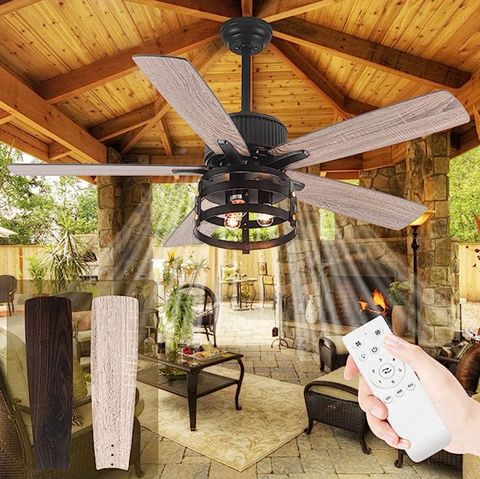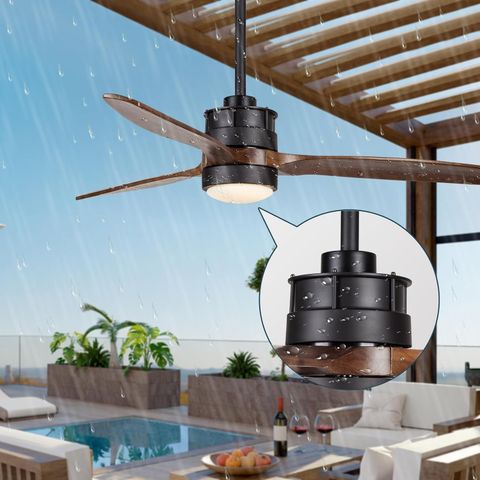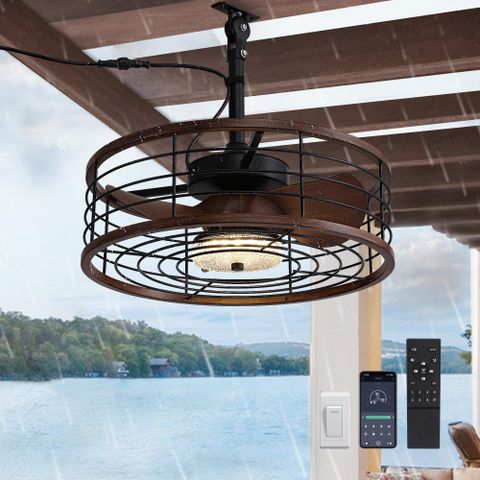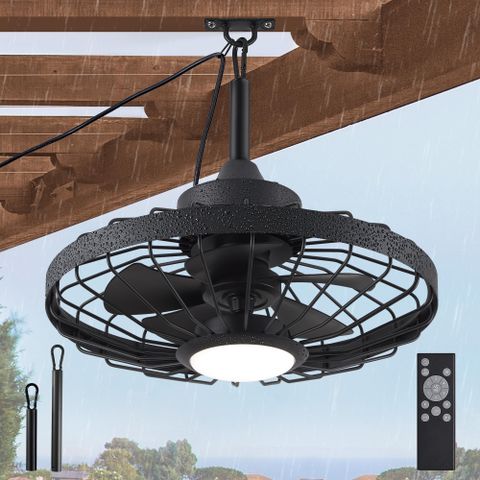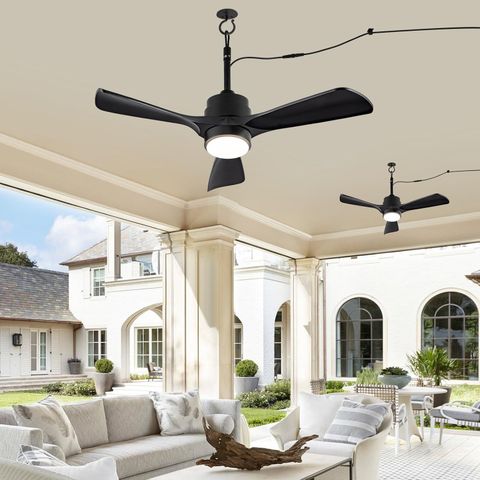Picture this: You’ve finally finished your backyard renovation, complete with a beautiful patio area, and you’re ready to enjoy some evening relaxation. But when the temperature starts climbing, you realize you forgot one crucial detail – proper outdoor ventilation. That’s when you understand why choosing the right patio ceiling fan isn’t just about aesthetics. It’s about function, durability, and making sure you don’t end up with a product that fails when you need it most.
When it comes to creating the perfect outdoor living space, few elements are as important as proper air circulation. Patio ceiling fans can transform a stuffy, uncomfortable outdoor area into a refreshing retreat. However, selecting the right one involves more than just picking something that looks good. The wrong choice can lead to disappointment, expensive replacements, and endless frustration. Many homeowners make critical errors during the selection process that they never even realize until months later when their fan either breaks down or simply doesn’t perform as expected.
Choosing the Wrong Weather Rating
One of the most common pitfalls is not paying attention to weather resistance ratings. It’s easy to focus on the fan’s appearance or price, but ignoring its ability to withstand outdoor conditions can be costly. A fan rated for indoor use will quickly deteriorate when exposed to rain, humidity, or direct sunlight. Look for fans with an IP rating of at least IP44, which protects against solid objects larger than 1mm and water splashing from any direction. Some premium models go up to IP65 or higher, offering even better protection. For areas with heavy rainfall or high humidity, like coastal regions, you’ll want to invest in fans specifically designed for those conditions. Remember, the cheapest option might actually cost you more in the long run if it needs replacing every few seasons.
Neglecting Size and Blade Span Considerations
Another frequent error is selecting a fan that’s either too big or too small for the space. A fan that’s too large for a small patio can create dangerous wind speeds and make the area feel uncomfortable rather than refreshed. Conversely, a fan that’s too small won’t provide adequate airflow for larger spaces. Measure your patio carefully before purchasing. For areas under 15 feet by 15 feet, a 42-inch or smaller fan typically works well. Larger spaces may need fans ranging from 52 to 72 inches in diameter. Consider the ceiling height as well – fans installed on low ceilings need to have shorter blades to prevent safety hazards. The right size ensures both efficiency and safety, making your investment worthwhile.
Overlooking Motor Quality and Durability
The motor is the heart of any ceiling fan, and outdoor models face additional challenges. Cheap motors may seem attractive initially, but they often fail within a year or two due to exposure to the elements. Look for motors specifically designed for outdoor use, preferably those with sealed bearings and corrosion-resistant components. These motors can handle temperature fluctuations, moisture, and dust much better than standard indoor motors. Also consider the warranty offered – a good outdoor fan should come with at least a 5-year guarantee. If a manufacturer won’t stand behind their product for several years, it might indicate quality issues. Quality motors ensure consistent performance and longevity, which means fewer replacements and less hassle.
Ignoring Installation Requirements and Electrical Needs
Many people assume all ceiling fans are installed the same way, but outdoor installations require special considerations. Not every ceiling can support the weight of a large outdoor fan, and electrical requirements differ significantly from indoor setups. Check that your ceiling can handle the load – outdoor fans typically weigh between 15 and 30 pounds. You may need professional installation if your existing electrical setup doesn’t meet requirements. Additionally, outdoor fans need GFCI protection to prevent electrical accidents in wet conditions. Some models require hardwiring while others use plug-in options. Understanding these requirements upfront prevents costly mistakes and potential safety issues down the road. Don’t let a simple installation oversight ruin your outdoor comfort plans.
Failing to Consider Light Fixture Integration
While many people focus solely on airflow, they often overlook the importance of lighting integration. Outdoor patio fans with integrated lighting can provide both comfort and ambiance, but they must work together effectively. Ensure the light fixture matches your desired brightness levels and style. LED bulbs are preferable for outdoor use because they last longer and produce less heat. Some fans offer dimming capabilities, allowing you to adjust lighting based on time of day or mood. Poorly integrated lighting can create shadows or inadequate illumination, defeating the purpose of having both features. Think about how you’ll use the space – do you need bright light for dining or softer lighting for relaxing? The right combination enhances your outdoor experience.
Not Researching Proper Maintenance and Cleaning
Even the best outdoor fan will eventually need cleaning and maintenance, but many buyers forget to consider this aspect. Outdoor fans accumulate dirt, debris, and sometimes bird droppings that can affect performance. Some models require regular blade cleaning, while others feature self-cleaning mechanisms. Check if the fan’s materials can withstand typical cleaning products or if special care is needed. Regular maintenance can extend a fan’s life significantly, so factor this into your decision-making process. Consider how much time and effort you’re willing to invest in upkeep. A fan that requires daily cleaning might not be worth the investment if you prefer a set-it-and-forget-it solution. Understanding maintenance needs helps ensure your fan remains functional and efficient.
Selecting the right patio ceiling fan for outdoor use is more than just a shopping trip – it’s an investment in your comfort and enjoyment of your outdoor space. By avoiding these common mistakes, you’ll ensure that your fan not only looks great but also performs reliably for years to come. Remember that the cheapest option isn’t always the best value, and taking time to research weather ratings, size requirements, motor quality, and maintenance needs will save you money and headaches later. Whether you’re entertaining guests or simply enjoying quiet evenings outdoors, a properly chosen fan creates the perfect atmosphere. Don’t let a poorly selected fan dampen your outdoor dreams – make informed choices that will keep you cool and comfortable all season long. Your future self will thank you for taking the extra time to get it right the first time.

